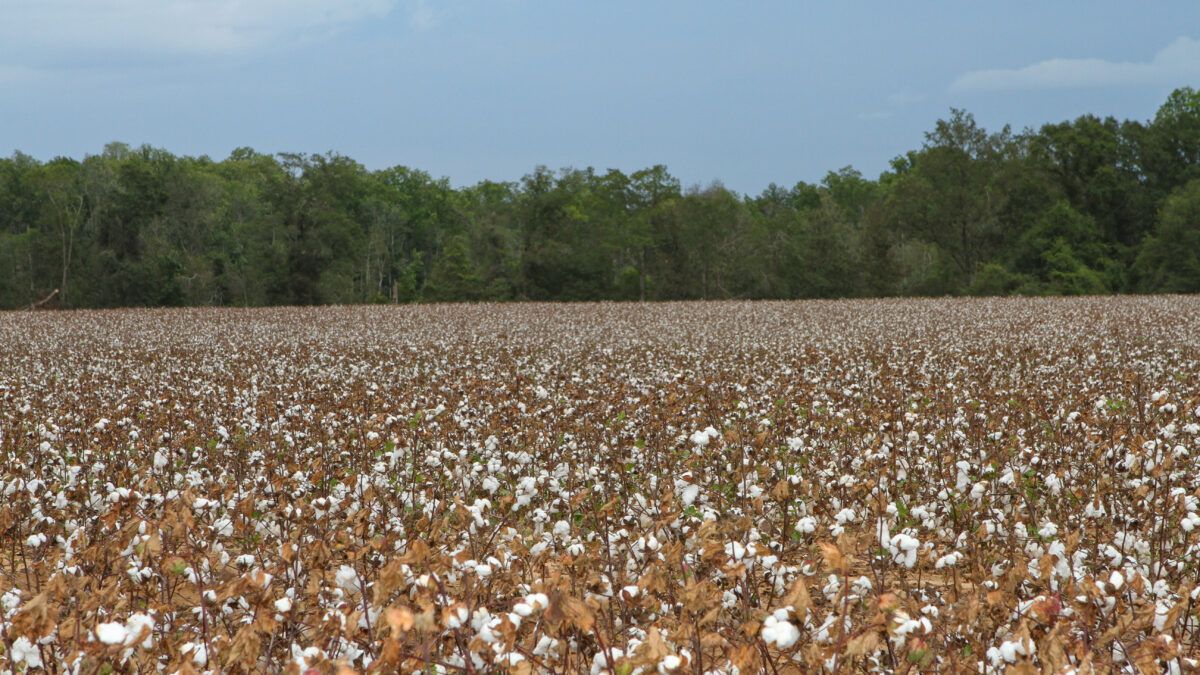Ag Sustainability Improvements Advance Through Shared Vision and Commitment
Guest Author
Special Contributor to FB.org

photo credit: Alabama Farmers Federation, Used with Permission
Guest Author
Special Contributor to FB.org
Though they seldom get credit for it, U.S. farmers are, in fact, decreasing their environmental footprint. Field to Market, the Alliance for Sustainable Agriculture, is helping farmers measure the environmental impact of farming, track and promote their improvement efforts, and share their progress with others in food and fiber supply chains.
Field to Market promotes a voluntary, collaborative approach to sustainability that is expressly science-based, technology-neutral and focused on outcomes within a farmer 's control. The program seeks to measure and advance the sustainability of agriculture. Its goal is to create opportunities for continuous improvement in productivity, environmental quality and consumer health.
The program involves a collaborative effort with more than 70 members – including the American Farm Bureau Federation – representing all facets of the food supply chain: from farmers and retailers to academics and conservation groups. Combined, Field to Market member companies represent nearly 4 million workers and $1.3 trillion in revenues.
Sustainability is a complex issue, with economic, environmental and social impacts. Food supply chain efforts to improve environmental sustainability, launched by major retail grocers, restaurant chains and processors, began in earnest in 2006. Field to Market was established in 2007 as an initiative of the Keystone Center, an independent, nonprofit organization that covers a wide array of environmental, energy and health policy issues. Field to Market became an independent, nonprofit organization in 2013.
"Going green" is trendy and lots of practices may sound "green," but long-term improvement requires establishing metrics to measure actual impacts. From there, the supply chain can work together to set reasonable and achievable goals that do not favor improvement in one of the environmental, economic or social impact areas, while negatively affecting the others. In the mid-2000s, the concept of sustainability metrics was in its infancy. There was little understanding or agreement about which metrics could or should be measured, and few tools to undertake the daunting task.
In collaboration with the Natural Resources Conservation Service of the Agriculture Department and others, Field to Market developed the Fieldprint Calculator to help farmers assess the efficiency and environmental impacts of their management decisions. Corn, cotton, rice, wheat, potato and soybean farmers are using the Fieldprint Calculator to track and improve impact based on seven indicators: land use, soil conservation, soil carbon, irrigation water use, water quality, energy use and greenhouse gas emissions. Farmers can compare their performance against local, state and national averages developed using publically available data. Farmers can also use the calculator to share their progress with the rest of the supply chain.
Field to Market has ambitious goals. More than 1 million acres of farmland are currently involved with the program. By 2020, Field to Market hopes to cover 50 million acres, or about 20 percent of U.S. commodity crop fields.
Field to Market 's broader definition of sustainability is equally ambitious: to meet the needs of the present while giving future generations the tools to meet their own needs. The organization hopes to achieve this by focusing on critical outcomes: increasing productivity while improving the environment, human health, and the social and economic well-being of agricultural communities. Specific goals are tied to each indicator tracked in the Fieldprint Calculator.
A 2012 Field to Market report, which reviewed data from 1980 to 2011, tracked six crops and their environmental impact across five indicators: land use, soil erosion, irrigation water use, energy use, and greenhouse gas emissions. The 2012 report showed that while greater productivity also led to increased resource use, all six crops tracked in the program demonstrated progress in improving resource use and impact per unit of production. Along with this progress, the report also shows room for improvement.
Continuous improvement is a guiding principle of Field to Market and all of its participants. Farmers often get criticized for their practices while their careful stewardship is too often overlooked. In addition to promoting, measuring, and improving environmental impact, Field to Market and its Fieldprint Calculator provide farmers with another very important tool – the means to track their progress and the facts to tell their stories.
Robert Giblin writes, speaks and consults about agricultural and food industry issues, policies and trends.
Trending Topics
VIEW ALL